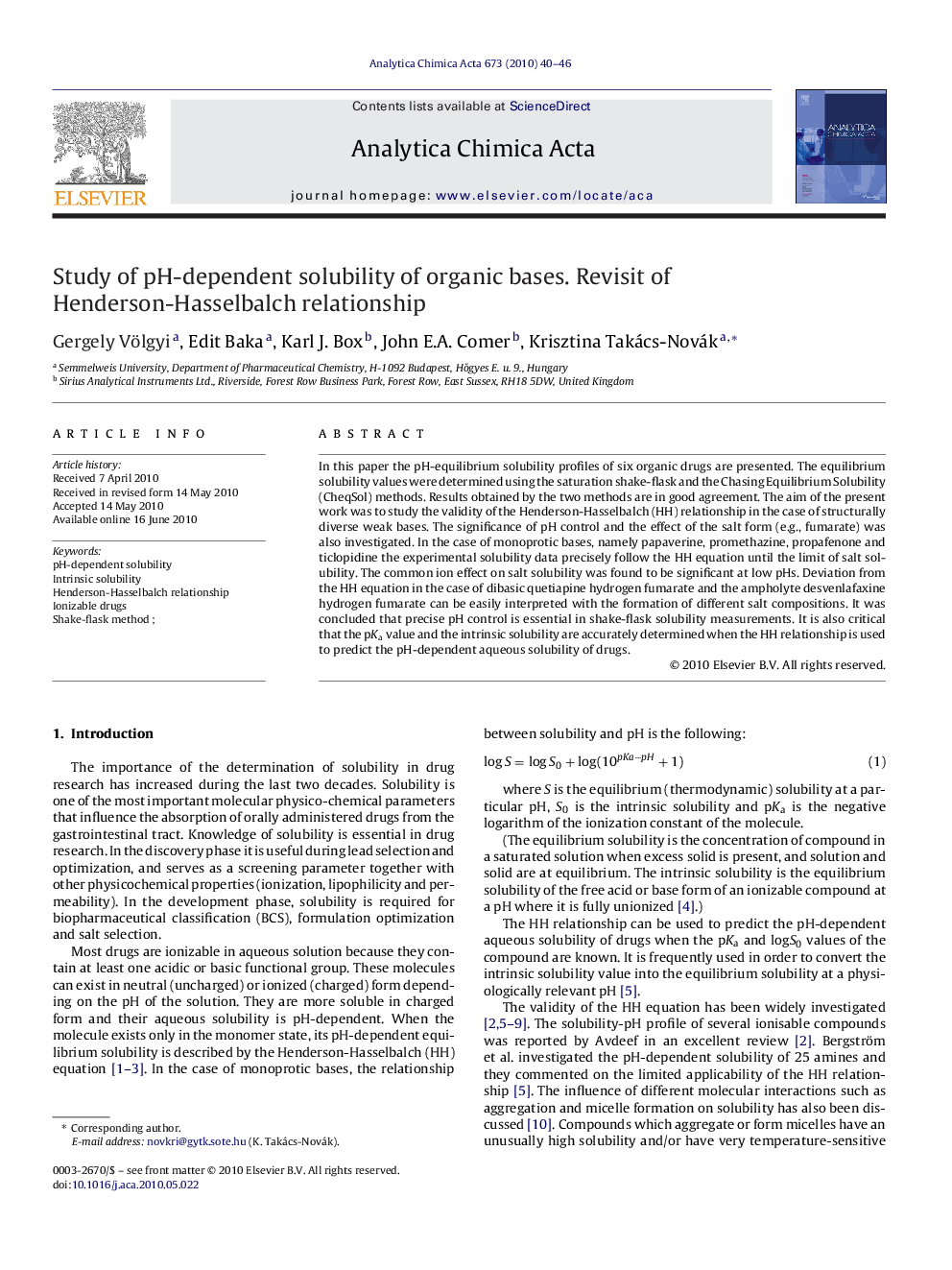| Article ID | Journal | Published Year | Pages | File Type |
|---|---|---|---|---|
| 1167371 | Analytica Chimica Acta | 2010 | 7 Pages |
In this paper the pH-equilibrium solubility profiles of six organic drugs are presented. The equilibrium solubility values were determined using the saturation shake-flask and the Chasing Equilibrium Solubility (CheqSol) methods. Results obtained by the two methods are in good agreement. The aim of the present work was to study the validity of the Henderson-Hasselbalch (HH) relationship in the case of structurally diverse weak bases. The significance of pH control and the effect of the salt form (e.g., fumarate) was also investigated. In the case of monoprotic bases, namely papaverine, promethazine, propafenone and ticlopidine the experimental solubility data precisely follow the HH equation until the limit of salt solubility. The common ion effect on salt solubility was found to be significant at low pHs. Deviation from the HH equation in the case of dibasic quetiapine hydrogen fumarate and the ampholyte desvenlafaxine hydrogen fumarate can be easily interpreted with the formation of different salt compositions. It was concluded that precise pH control is essential in shake-flask solubility measurements. It is also critical that the pKa value and the intrinsic solubility are accurately determined when the HH relationship is used to predict the pH-dependent aqueous solubility of drugs.
